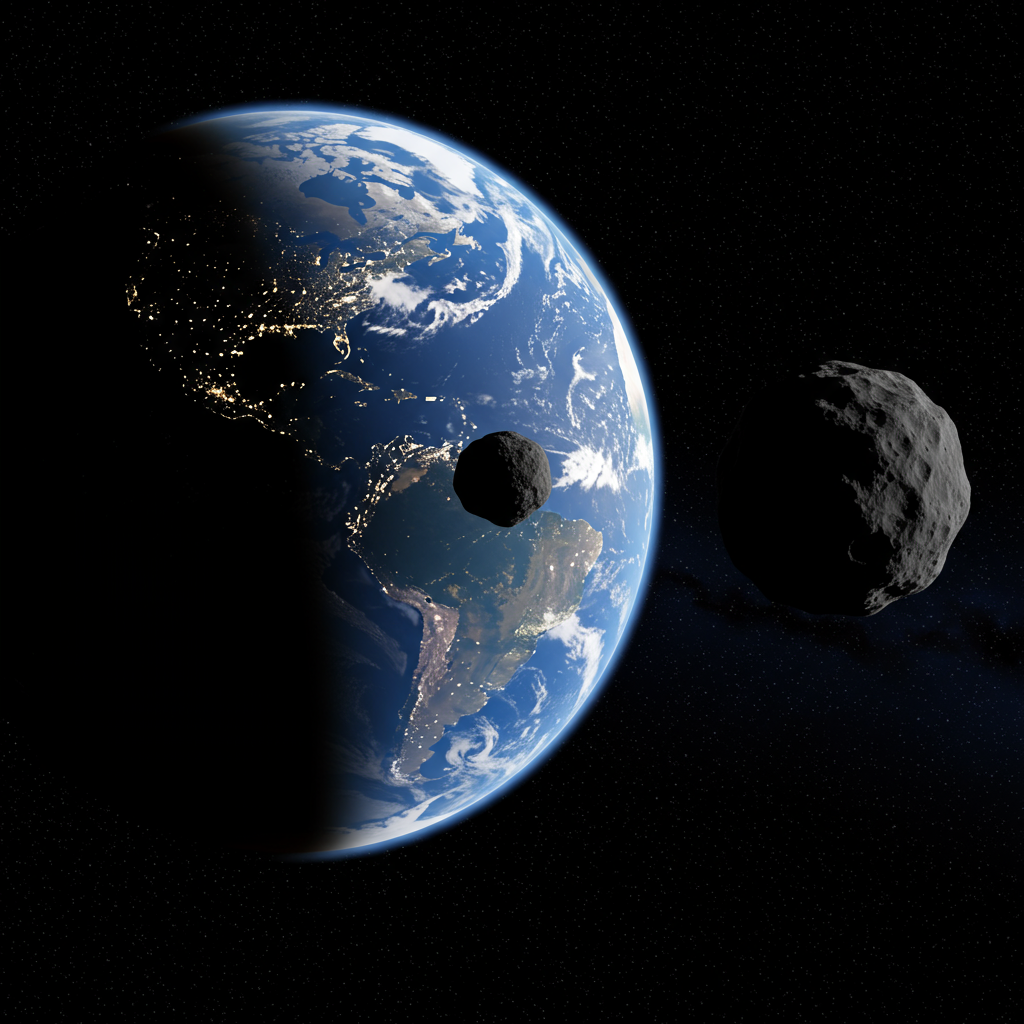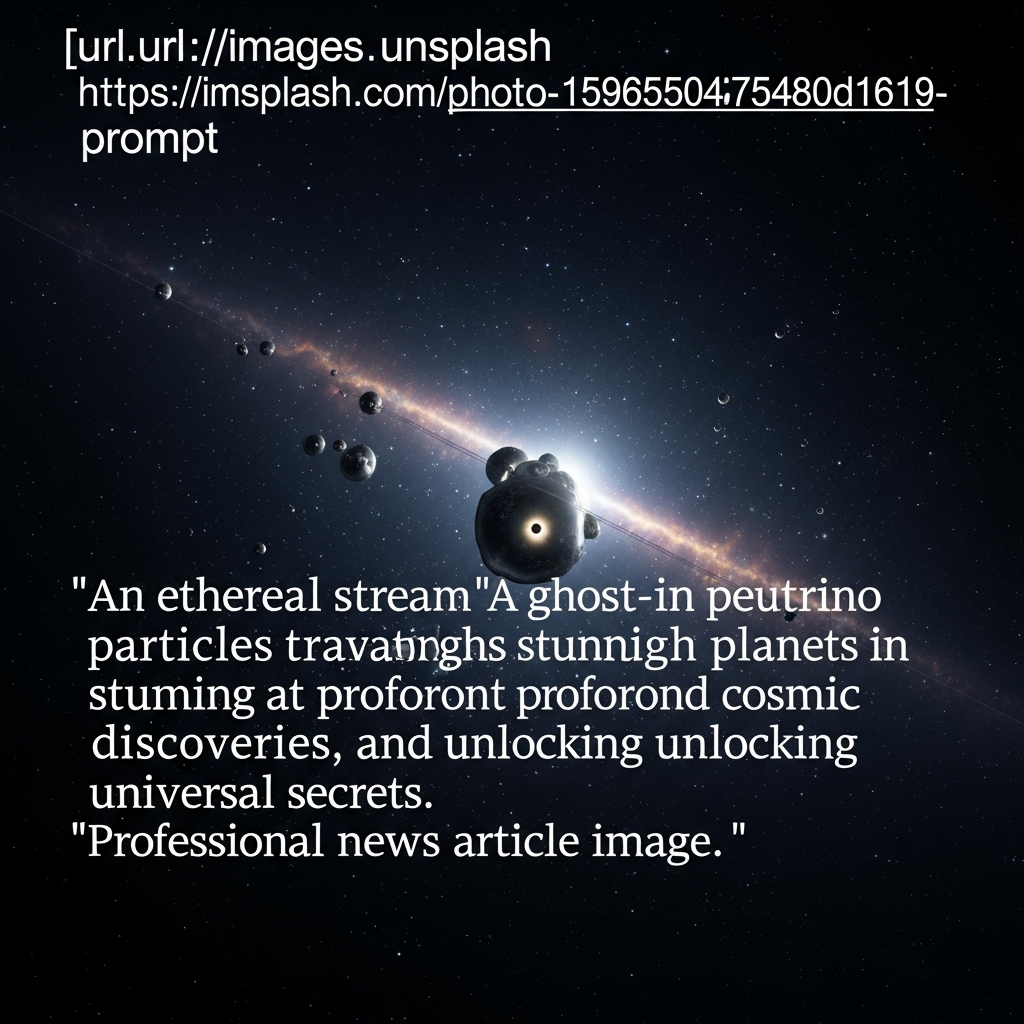For six decades, an elusive celestial companion has silently shared Earth’s orbital path, completely unnoticed by humanity. This hidden space rock, now officially designated 2025 PN7, has finally emerged from the cosmic shadows. Its recent discovery offers a compelling reminder of the dynamic and often surprising nature of our solar system, even in our immediate cosmic backyard. This “quasi-moon,” roughly 62 feet wide—about the length of a bowling lane—challenges our perceptions of Earth’s orbital environment and highlights the ongoing complexities of astronomical observation.
A New Neighbor: Understanding Earth’s Quasi-Moon
So, what exactly is 2025 PN7? It’s not a moon in the traditional sense, like our familiar Luna, which directly orbits Earth. Instead, 2025 PN7 is classified as a quasi-satellite or quasi-moon. This distinction is crucial. While it appears to “hover” near Earth, mirroring our planet’s journey around the sun, its primary orbit is actually around the sun itself. Think of it less as a direct tethered companion and more as a dance partner gracefully moving in sync. It maintains a fascinating, parallel trajectory, always staying within our general vicinity.
This unique orbital dynamic means 2025 PN7 never truly orbits Earth. It’s caught in a gravitational ballet with both the Earth and the Sun. Its proximity to Earth is significant, though. Astronomers estimate it never approaches closer than 2.8 million miles. Conversely, it doesn’t stray farther than approximately 37 million miles. This relatively consistent range has allowed it to remain our hidden orbital partner for an extended period. Researchers predict 2025 PN7 will continue this synchronized journey for another six decades before eventually drifting away.
The Moment of Discovery: Pan-STARRS and 2025 PN7
The revelation of this long-unseen object came on August 2nd, when the advanced Pan-STARRS observatory in Hawaii detected it. A team of researchers subsequently confirmed its existence and peculiar orbit, publishing their findings in Research Notes Of The American Astronomical Society. The designation “2025 PN7” refers to its discovery year and sequence.
The Pan-STARRS (Panoramic Survey Telescope and Rapid Response System) project is renowned for its role in identifying Near-Earth Objects (NEOs). These observatories tirelessly scan the skies, cataloging everything from distant galaxies to potentially hazardous asteroids. Yet, even with such sophisticated equipment, 2025 PN7 remained undetected for what amounts to an entire human lifetime, silently accompanying Earth since the Eisenhower administration. This underscores the subtle nature of its orbit and the sheer vastness of space, where even relatively close objects can evade detection for extended periods.
The Rarity of Quasi-Moons in Our Solar System
Quasi-moons are far from common. In fact, 2025 PN7 is only the seventh such object confirmed to exist within our solar system. Their scarcity makes each discovery particularly noteworthy. One of the most famous examples of a quasi-moon is Kamoʻoalewa (also known as 469219 Kamoʻoalewa). This slightly larger, elongated space rock has garnered significant attention. It’s currently the target of China’s ambitious Tianwen-2 mission, which aims to collect samples from it. This future mission highlights the scientific value placed on understanding these unique celestial bodies.
The study of quasi-satellites like 2025 PN7 and Kamoʻoalewa provides invaluable insights into orbital mechanics. It helps scientists refine models of gravitational interactions. Understanding these complex dance patterns enhances our knowledge of how objects move within the solar system. This knowledge can also inform future missions, potentially aiding in the identification of resources on similar asteroids.
Why Did 2025 PN7 Remain a Secret for So Long?
The question naturally arises: how could a 62-foot-wide object in Earth’s cosmic neighborhood go unnoticed for 60 years? The answer lies in a combination of factors related to its size, composition, and orbital characteristics. Objects of this size are relatively small and often dark, making them poor reflectors of sunlight. This “stealth” characteristic makes them incredibly difficult to spot against the infinite black backdrop of space. Unlike our Moon, which consistently presents a large, bright disc, 2025 PN7 is tiny and far less luminous.
Furthermore, its quasi-satellite orbit, while mimicking Earth’s path, keeps it at a considerable distance. It never comes close enough to be easily observed with smaller telescopes. Specialized observatories like Pan-STARRS, with their wide-field surveys and advanced detection algorithms, are specifically designed for such discoveries. Even then, detecting a faint, fast-moving object against the vastness of space requires immense precision and a touch of luck. This discovery perfectly illustrates the challenges of comprehensive space observation. Despite advanced technology and dedicated global teams, our immediate orbital environment still holds secrets.
Implications of This Orbital Discovery
The unmasking of 2025 PN7 carries several significant implications for space science and our understanding of Earth’s cosmic environment.
- A Crowded Neighborhood: Earth’s orbit is already densely populated. It’s home to thousands of human-made satellites, from communication relays to weather monitors. It also contains an ever-increasing amount of space debris, posing risks to operational spacecraft. The discovery of a naturally occurring, previously undetected quasi-moon like 2025 PN7 reminds us that our orbital region is even more cluttered and complex than we might have imagined. This adds another layer to the challenge of tracking objects in space.
- Advancing Astronomical Observation: This discovery is a testament to the continuous advancements in astronomical technology. It showcases the capabilities of facilities like Pan-STARRS. It also highlights the need for ongoing, systematic sky surveys. Such efforts are crucial for identifying and tracking potentially hazardous Near-Earth Objects, as well as for simply expanding our catalog of celestial bodies.
- Refining Orbital Models: Each new discovery, especially of rare objects like quasi-moons, helps scientists refine their understanding of gravitational interactions and orbital dynamics. These real-world examples provide invaluable data to test and improve theoretical models of how objects behave under the influence of multiple gravitational forces. This knowledge is essential for everything from planning future space missions to predicting the paths of asteroids.
Compared to the predictable dance of our true Moon, which we observe in stunning detail during phenomena like lunar and solar eclipses (as studied by missions like NASA’s Lunar Reconnaissance Orbiter), objects like 2025 PN7 demonstrate the subtleties of celestial mechanics. While Earth’s Moon slowly drifts away over millions of years, predictably changing the nature of future solar eclipses, 2025 PN7 represents a more ephemeral, dynamic interaction that demands constant vigilance and advanced observational techniques to grasp fully. Its brief, 120-year companionship serves as a cosmic whisper, reminding us that even the most well-studied parts of the universe still hold wonders yet to be fully charted.
The Future of 2025 PN7
For now, 2025 PN7 continues its orbital dance, a silent, unacknowledged companion for a little while longer. Scientists project that it will maintain its current trajectory for another 60 years. After this period, the gravitational influences of the Sun and Earth will subtly shift its path, causing it to gradually drift away from our planet’s vicinity. It will then become just another of the countless asteroids orbiting the Sun, no longer a quasi-moon of Earth. Its fleeting presence serves as a unique chapter in Earth’s astronomical story.
As technology advances, and as our understanding of orbital mechanics deepens, more such objects may be discovered. Each new finding enriches our cosmic narrative. It compels us to look up with renewed curiosity, appreciating the intricate and often surprising universe that surrounds us.
Frequently Asked Questions
What exactly is a quasi-moon, and how does 2025 PN7 fit this description?
A quasi-moon, or quasi-satellite, is a celestial body that orbits the Sun but has a trajectory that closely mimics Earth’s orbit, making it appear to stay in Earth’s vicinity. Unlike Earth’s true moon, it does not directly orbit our planet. 2025 PN7 perfectly fits this definition; it orbits the Sun while maintaining a parallel path to Earth, never getting closer than 2.8 million miles or farther than 37 million miles. This creates the illusion of a shared orbital journey.
Where was 2025 PN7 discovered, and are there other known quasi-moons?
2025 PN7 was discovered on August 2nd by the Pan-STARRS observatory located in Hawaii. This facility is crucial for detecting Near-Earth Objects. Quasi-moons are quite rare; 2025 PN7 is only the seventh such object identified. Another notable example is Kamoʻoalewa, a larger quasi-moon that China’s Tianwen-2 mission plans to visit and collect samples from, highlighting the scientific interest in these unique celestial companions.
What are the broader implications of discovering objects like 2025 PN7 for space exploration and Earth’s orbital environment?
The discovery of 2025 PN7 underscores several key implications. Firstly, it highlights that Earth’s orbital environment is more crowded than previously thought, not just with human-made satellites and debris, but also with natural, previously undetected celestial bodies. Secondly, it showcases the continuous advancement and importance of astronomical observation technologies like Pan-STARRS. Finally, studying the unique orbital dynamics of quasi-moons helps scientists refine models of gravitational interactions, improving our understanding of the solar system and aiding in future space missions or asteroid tracking efforts.




